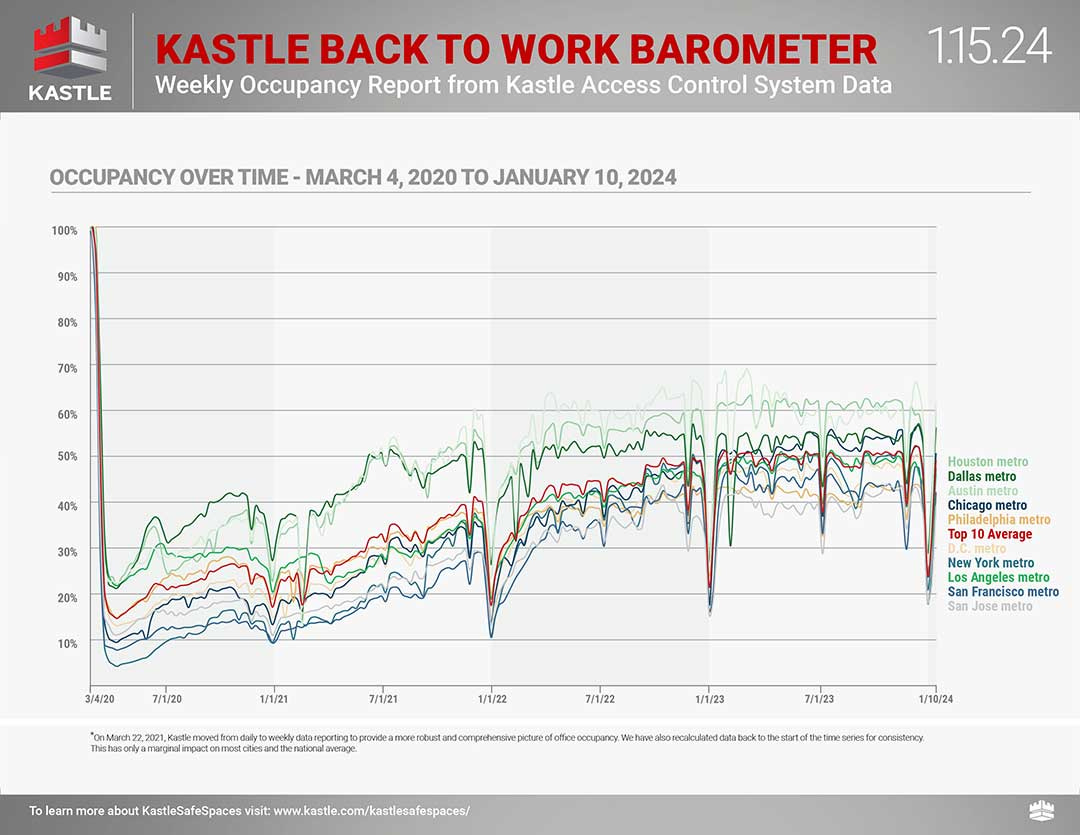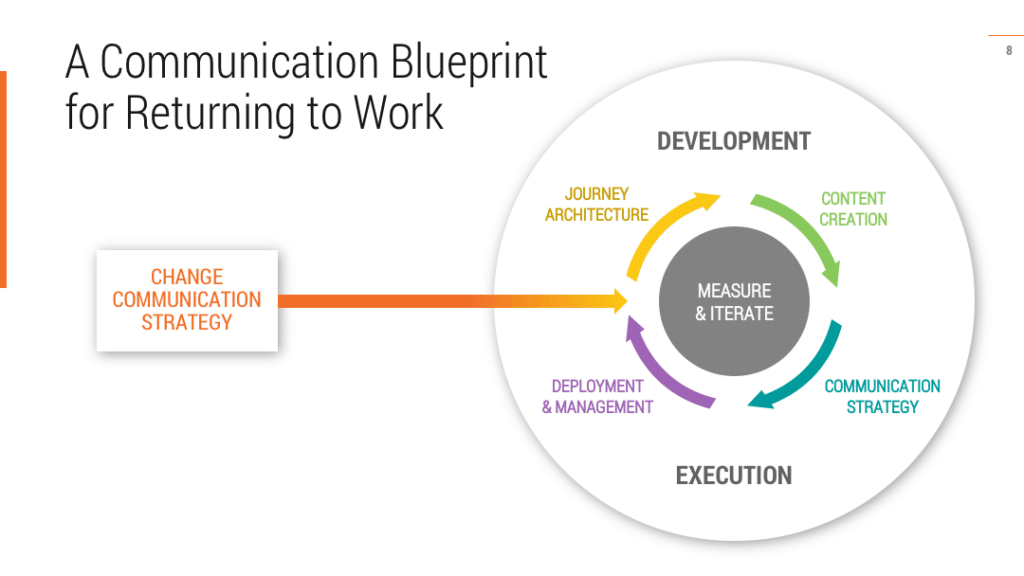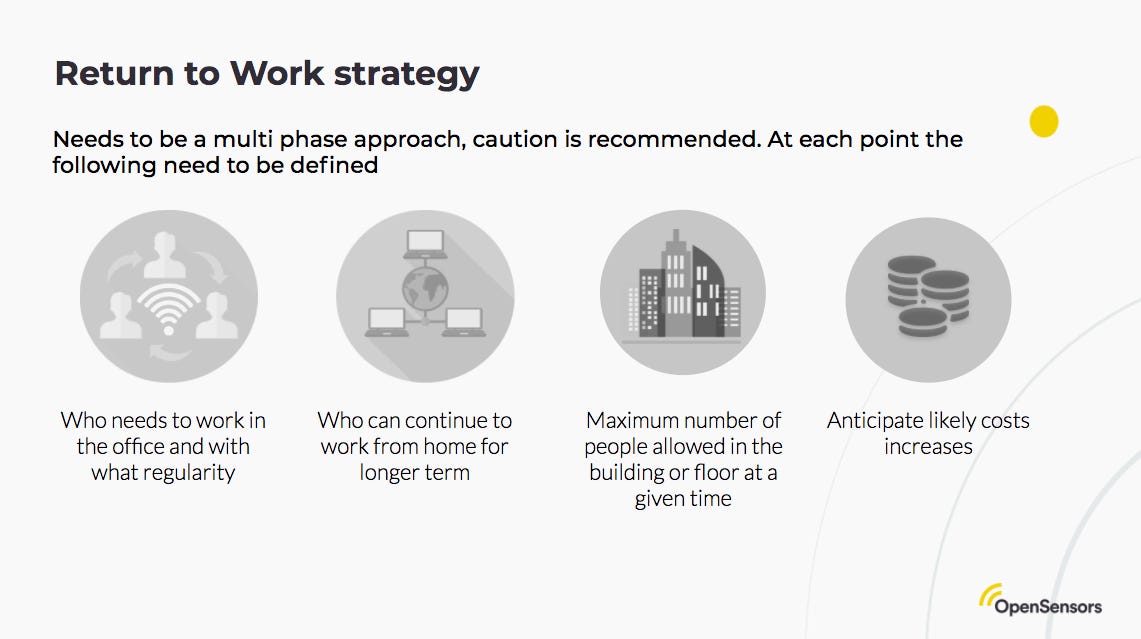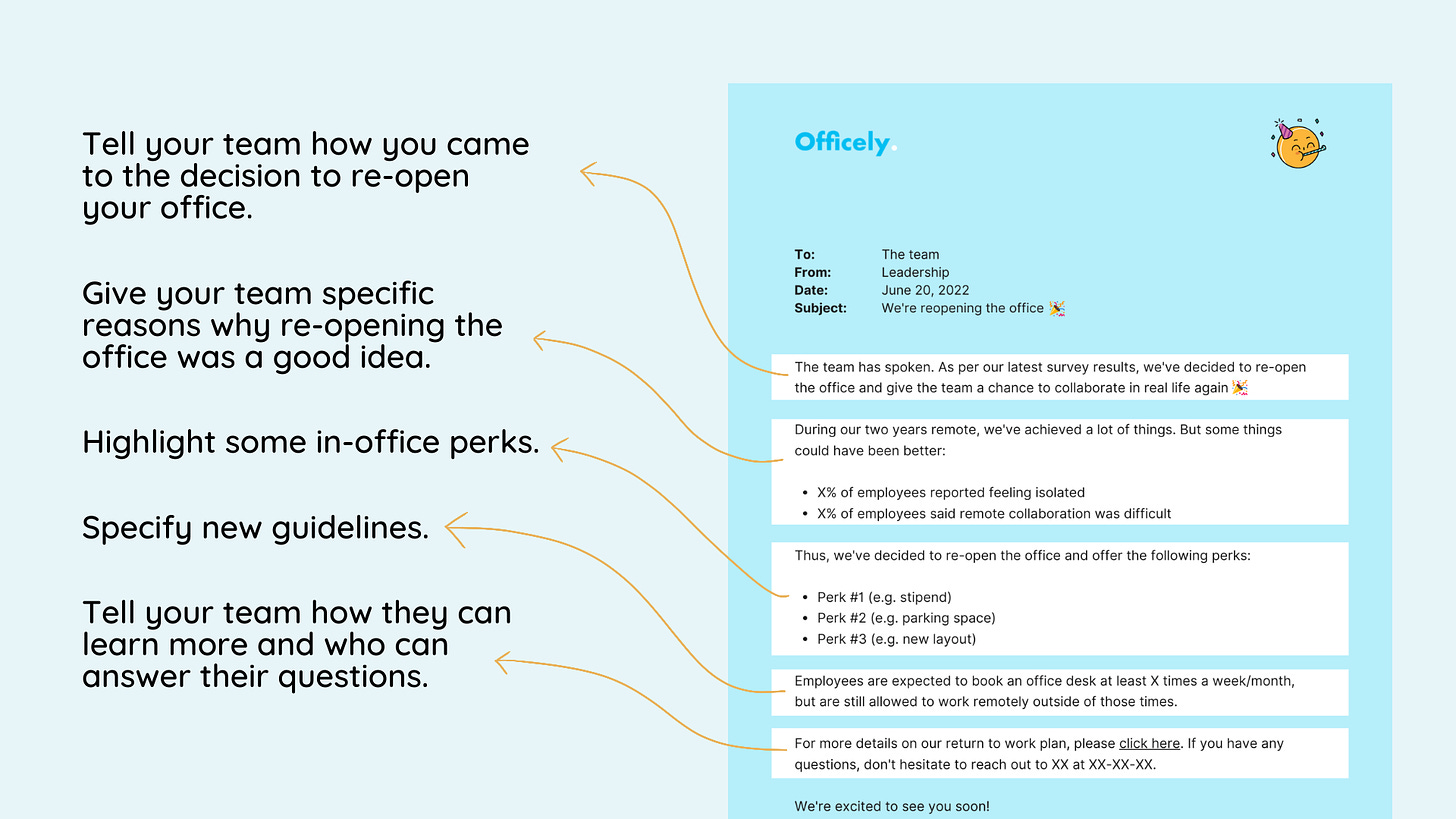January 20th, 2024: Greetings from Austin and welcome to the hundreds of new followers via my free digital book giveaway. You can read more about why I did that below. If you’re new here, I write on a wide range of topics including unconventional paths, our relationship to work, and organizations and remote work. Today is a reflection on the “return to office” campaigns that companies don’t seem willing to give up on
+ I’m going to be leaning into some small experiments helping other people publish books this year. I don’t know how I’m going to do this but I’m hosting a Q&A Jan 23rd at 12pm CT. Members can access the event here. If you’d like to join:
#1 Please Return To The Office!
I imagine a group of finance executives sitting around a dinner table at a fancy manhattan restaurant sometime in 2021 looking at each other and saying something like “guys we need to convince people to come to the office, otherwise our commercial real estate portfolios are wrecked.”
An executive speaks up, “I’ll get my PR team on this, they have great relationships with the media and can a/b test some ways of framing this over the coming weeks.”
Everyone’s seen these headlines. The water cooler is back! Remote work will ruin your career! Actually, everyone prefers office work (we have a survey). Well maybe remote work is fine, but do you really want all the Chipotle’s to go out of business? What about the baristas!
By the end of 2022, one of the execs text the group chat, “office work has flatlined, have you seen this chart?!
Another exec texts back: “I can get Malcolm Gladwell to criticize working from home”
“But doesn’t he work from a cafe every day?”
“Who cares?! Millennials love him, right? Remember Blink?”
I’m not saying there’s a conspiracy to convince people to return to office but when you are getting a hardcore remote worker like Gladwell to try to convince people, you’ve sort of lost the plot, no?
Have you talked to people in the last few years about work? I’ve talked to many. People love working remotely. They love the freedom. People found hobbies. They improved their relationships with their families. They moved to places that were more affordable. They got to spend every day with their kids. They were able to explore their hobbies on the side. They got more sleep.
But some people also had complaints and I don’t blame them. The most consistent thing I’ve heard is that they can’t believe their companies that didn’t put a single ounce of energy during the pandemic into actually taking advantage of remote working to improve operations. All they did was upgrade their Zoom or Teams subscription and said, “business as normal”! People hated this and everyone knew it was absolutely insane to have 25 people on a zoom meeting where one person has to actually make a decision but everyone just went along with it because it didn’t seem like there was a chance anything would change. They tolerated it because at least they could sit through the silly meeting with their running shorts on and get up and go for a run as soon as it was over. After more than a year of this, however, people wanted to go back to the relative freedom and energy of getting up and walking around to different meeting rooms while swinging by the cafe with nice coffee and snacks (even if most of the meetings still included remote colleagues).
The whole remote or in-office debate is a fake debate. It is fake because anyone who’s worked in knowledge work for the last ten years already has been working remotely. Even if you happen to be in the same building or office as someone, your work is mediated by a screen, most of the time.
And this is why I think all this conversation around remote work is really exposing something much deeper: that most companies don’t have a worker location problem, they have a mission problem.
Mission Problems Not Worker Location Problems
At McKinsey, I worked in this research hub in Boston where everyone was in the office most days. It was electric. I loved it. I hated working remotely because it was far less energizing and motivating. But McKinsey was also a place in 2008 where I could always work remotely whenever I wanted, without permission. This is what a healthy culture feels like. Expectations were high but I knew that I had the support and environment to deliver on those expectations. I wanted to be around other people because I needed them to do great work. This is similar to what Brie Wolfson had to say about why she put up with intense demands at Stripe: “it felt good to care about anything that much. And, to be around people who I know cared that much too.”
What’s happening in the last couple of years is that a lot of leaders know that they don’t have cultures that feel like this. But they also don’t really know what to do about that because changing culture is hard, if not impossible, in big companies.
Instead of facing any of this head-on and asking questions like “what has all of this taught us?” they notice that there is a loud conversation about remote work, and think, everyone else is talking about their return to office policy, we should too! And so committee is formed and policies are drafted.
A culture with a strong mission will mostly shrug off policies like this because people are already used to acting with agency at the individual or team level in order to deliver on their objectives. Having a mission means people know what they are supposed to do and where they are headed. But many companies don’t have a strong mission and in these places, a return-to-work policy is a political drama bomb for the culture. The gossip and power games will commence almost immediately, exceptions will be made for top performing individuals and teams, and people will start gossiping about leaders and their true intentions.
This is the problem with these policies. The best companies, teams, and individuals don’t need them. Because they have a strong mission, people already know what they are supposed to be doing. Thus, any aggressive top-down return to work policy is an admission that the organization has no clothes.
Return To (Perform) Work
This all makes the optimist inside of me sad. We had an enormous opportunity to for years rethink how we work but instead, most companies took in-office work and started LARPing it on screens. And then when the pandemic was winding down, we kept doing that, just with some minimum weekly in-person requirements. How is it that not a single company seems to have tried doing something like one week a month in-office or anything more creative like that?!
The greatest output of the last two years in the corporate world seems to have been the endless slides and research that went into every company’s comprehensive “Return To Office” strategy.
We expected flying cars and all we got were a bunch of mediocre slides:
Many of these top-down plans have done tremendous harm to company culture. Employees were smart enough to recognize that many of these policies were rolled out with endless exceptions, were used to sneakily fire people, and were applied without much thought for what might actually be best for how the company works.
People are frustrated that instead of asking “how do we get work done?” or “how do we best leverage the resources of the company?” leaders were much more worried about “why aren’t people coming to the office like they are supposed to?”
When you are passing a policy aimed at controlling where people should be, you are stripping them of their own judgement and agency. It also incentivizes them to spend more time thinking about the appearance of how and where they are working rather than focusing on their actual work. This is all reinforced by the fact that many of the senior leaders that have to come up with these plans don’t really buy into them either. Just take a look at the WebMD return to office video that leaked this past week and see if any of these company leaders seem to really believe what they are saying:
During the pandemic many people remarked to me that they felt less pressure to “perform” working. They felt they could be themselves and didn’t have to put on their serious business persona as much. For many companies, formal return to office plans have brought back the pre-covid performance of work era with a little more surveillance. Everyone knows that everyone knows remote work is possible all the time but also everyone accepts that you have to do the three day in-office thing now at most companies.
But there is a quiet resistance happening and I didn’t believe it at first…
Coffee Badging: Reports From The Wild
This whole piece was inspired by my discovery of something called “coffee badging.” This is where people will swipe into their office to grab coffee and then return home so that they can meet the minimum number of in-office days set by HR.
I tweeted, “this can’t be real, do people have examples?!”
And they came, quickly. Here are three:
Wife works for a big investment firm (in tech, not finance). They started mandatory 3x/week in the office at some point last year. No one followed it. Now they're serious about it and randomly check badge swipes, so if you don't go in, you get an HR notice. No consequences yet, but no one wants an HR notice. Her boss says it's nonsense, but out of her hands, so as long as badges get swiped and she doesn't get an HR notice, no one cares. So basically entire tech teams at the bank will swipe their badges, meet up for lunch or coffee, maybe take a meeting or two, and then head home. The funny thing is it disrupts the whole day, people have to commute etc and have less time for 'working'
AND
I work at a big tech company and we are supposed to go in 2-3 x a week since last fall. I'm based in [TOWN], CA. I have about 5 direct teammates in this office but almost all of work is done solo. Most of my work supports stakeholders in NYC, DC and LA so most of my meetings with them are virtual. So I typically go in the office after my morning calls or meetings at 1030-11, eat lunch and head home around 2:30-3 and then I may end up having 1 or two more calls I'll do at home.
But I can 100% attest that people are doing this. Some go in and stay all day especially if all of their teammates and who they support is in that office but for teams that work more globally - this is for sure happening a lot.
AND
I work at [Company] in Boston, and we are mandated to go in at least 3 days a week, but my strategy is to always go in on Wednesdays, usually Tuesdays. To makeup for the missing 1-2 days, I simply make it my daily run to the office, tap in, and walk out the side exit, run home for an 8 mile run. The run is usually before or after the workday. Many of my coworkers know I do this and they don't mind as they all dislike RTO as well. At [Company] we have the ability to see our badge report record which updates every Sunday evening I believe.
I actually plan on quitting at [Company] in a couple months and doing some solopreneurship, before they either fails after 6-12 months or I decide to apply for a startup, so I may test the RTO rules a bit in the next month right before I quit.
At one level this is hilarious and absurd but on another its quite depressing. This is a massive waste of human ingenuity and spirit. We’ve taken an extreme fear of people not working and injected that into half-baked reactionary HR policies that have nothing to do with creating great work environments.
People want a place where they can thrive and some people might find that in a 100% in-office environment and others might find it in a 100% remote environment. Others might find it in a hybrid workplace. But the success of those companies will not be because of a top-down attendance policy. It will come from a bottom-up re-imagination of how people can do great work together in this new technological era.
I’d love to hear more of people’s first hand experiences in the comments and in this poll:
#2 Giving My Book Away For Free
A few days ago I was listening to a fun conversation between David Senra, Mitchell Baldridge, and Eric Jorgensen and Eric was talking about giving his book away for free. It was his hypothesis that this has led to a far bigger audience for his book, one that has sold over a million copies globally.
I was intrigued by the idea and so when I got home, I decided to make the digital version of my book (epub and pdf) free on my site.
Here’s what happened:
I posted this tweet:
It got shared like crazy, with 141k views and 2,200 link clicks
After I added the Gumroad form, four hours after posting the link, I ended up getting over 1,300 clicks in about 24 hours. In the first day I was getting about 1-2 downloads per minute.
Almost 500 of these people opted into this here email list (thank you for joining!)
I don’t really have any goal so not sure what comes next!
The biggest question I received: “why would you do this?”
For me it’s simple. It’s fun and I wanted to see what would happen. I’ve loved gifting my book to thousands of people over the past couple of years and its an extension of my gifting approach that I’ve embraced for years. It felt good and like
says, “do the weirdest thing that feels right.”It’s also not as crazy as some people might think. At a “free” price point, I’m basically attracting a bunch of people who would never have bought my book. Price discrimination 101. Many of these people will never open the file and that’s okay. But some might read the book and decide to buy the audiobook and/or paperback. Or they might decide to buy a copy for someone else.
While offering something for free in the short-term might cannibalize book sales in the short-term, it increases the surface area for serendipity in the long run. I seem to have convinced about 450 of the 1,300 that downloaded my book to join this newsletter and because I don’t plan to stop writing, perhaps this will help me build an audience for future writing projects a lot faster than from what I was doing before.
Like anything, it’s an experiment. Where it leads? We will find out together!
Thanks For Reading
Here are four things worth checking out
If you’d like to meet others on “pathless paths”, you can join The Pathless Path Community if you want to hang with us too, or if you are already a subscriber, get access here.
Buy or listen to my book, The Pathless Path. If you’d like to do a bulk order for gifting purposes or a book club message me and I’ll ship them to you at around $5 per copy via Amazon
Subscribe to my podcast and leave a review.
Refer 10 people to get my book for free:
Affiliates: In addition, I recommend all of the following services: Ali Abdaal’s Youtube Course, Collective for setting up an S-Corp in the US (recommended >$60k revenue), Riverside.fm for HD podcasting, Descript for text-based video editing, Transistor for podcast hosting, Podia or Teachable for courses, Skystra for WordPress Hosting, and Circle for running a community.
Submissions: Want to share your journey with my audience? I accept drafts for submission.
Sponsors: I accept the occasional sponsor, please submit a request through Passionfroot
A reminder: I don’t check unsubscribe alerts and never look at my subscriber list. So if you feel like unsubscribing, you can do so below.














Great article. Your “mediocre slides” made me chuckle.
I work in the rail industry in the UK. A large part of our revenue comes from people going into the office. So we had an additional (and maybe more ridiculous) reason given to us....we should be setting an example to the wider working population!
Thanks for sharing the definition of "coffee badging". It is an interesting concept. I 100% agree with how having a clear company mission is more important than strict office rules. None of the WebMD execs looked like they believed what they were saying.